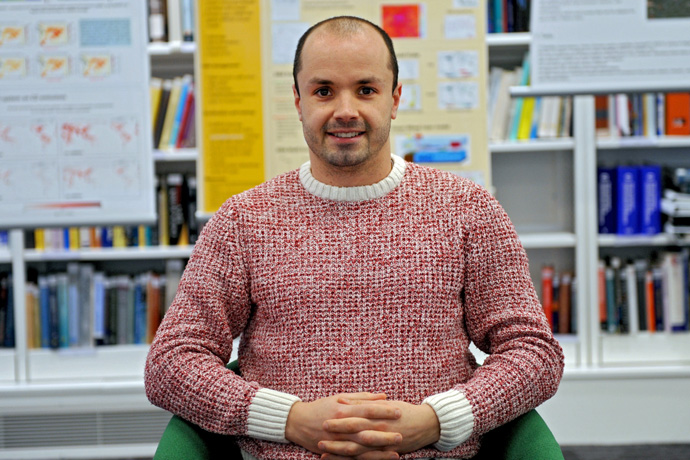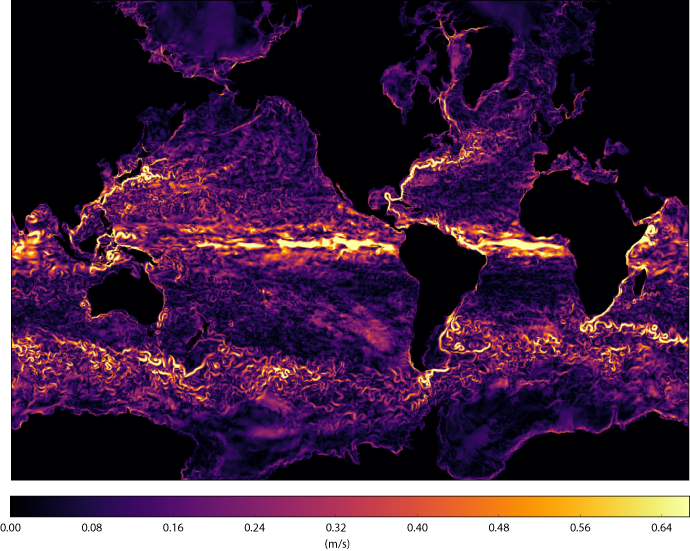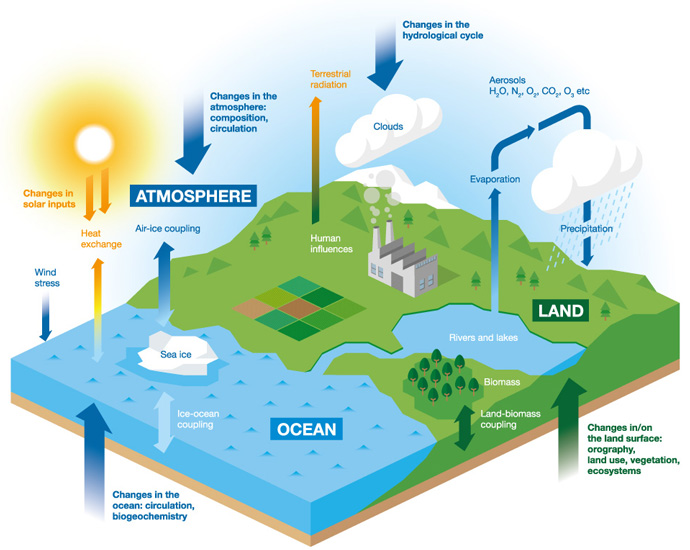

Phil Browne joined ECMWF just over a year ago.
Phil Browne trained as an applied mathematician before joining ECMWF to help develop a key aspect of operational numerical weather prediction (NWP): coupled ocean–atmosphere data assimilation.
After a first degree in mathematics, Phil completed a PhD in numerical optimisation.
“The main application was to improve the design of aircraft, but the mathematical methods are not unlike some of those used in the assimilation of Earth system observations into NWP models,” he notes.
Looking to see where he could apply his skills, Phil noticed a big demand for work on data assimilation methods in the geosciences.
He focused on the topic in his postdoctoral work on ‘particle filters’, a method designed to find “not just our best estimate of the current state of a system but the full distribution of possible states”.
Just over a year ago, he obtained a post in the Earth System Assimilation Section in ECMWF’s Research Department.

One of the aspects Phil is working on is the use of ocean surface currents in a coupled data assimilation system. This should improve the use of satellite data from scatterometers, which can be used to measure ocean near-surface wind speed and direction.
Working in an operational environment brought new challenges, from factoring in tight constraints on the timeliness of forecasts to understanding the ins and outs of ECMWF’s Integrated Forecasting System (IFS).
“It has been a steep learning curve,” he says, “but it is rewarding to see that quite theoretical mathematical work can ultimately make a big practical difference, by leading to better weather forecasts.”
Coupled data assimilation
Data assimilation in NWP combines Earth system observations with a short-range forecast to arrive at a comprehensive estimate of the current state of the Earth system.
This is then used as a starting point for new forecasts.
Phil’s work at ECMWF is in the rapidly developing area of coupled data assimilation.
The basic idea of coupling is to take into account all relevant Earth system interactions in weather forecasting models.

Weather is the result of complex interactions between different components of the Earth system, such as the atmosphere, the land surface and the ocean.
This means that, for example, the atmosphere–land, ocean, sea-ice and wave models all need to talk to each other.
Coupled data assimilation takes into account the same kind of dependencies.
“It is about making sure that any adjustment of the initial conditions ripples through all parts of the forecasting system in a way that ensures the consistency of the initial conditions,” Phil explains.
He points out that this way we can extract more information from Earth system observations: soil moisture observations can tell us something about near-surface humidity, for example, and sea-surface temperature measurements can tell us something about near-surface air temperature.
“The expectation is that a more consistent initial state leads to better forecasts.”
Challenges
While the goal is clear, there are formidable obstacles on the way.
“For a start, in coupled data assimilation the problem to be solved suddenly gets bigger,” Phil says. “More variables need to be processed in the different models, which requires more computing power.”
Another problem is that observations for different Earth system components may become available at different timescales.
This is certainly true in Phil’s area of responsibility: coupled ocean–atmosphere data assimilation.
Atmospheric observations are for the most part frequently updated and are immediately put on the Global Telecommunication System.
Some marine observations, on the other hand, become available much less frequently and with a greater delay.

An Argo float is deployed into the ocean. Today thousands of Argo floats provide a high-density observation network across the globe for ocean parameters to a depth of 2,000 metres. (Photo: CSIRO)
Information obtained by drifting floats, for example, may be days old before it enters data assimilation systems.
“That is not necessarily a problem for uncoupled ocean data assimilation, as the ocean evolves more slowly than the atmosphere, but it becomes an issue when you want to do coupled data assimilation.”
Better analyses
A coupled data assimilation system called CERA has been tested in two recent coupled reanalysis projects at ECMWF.
Reanalysis is the reconstruction of past weather and climate achieved by combining observations with models.
Phil’s job is to get a CERA-like system ready for operational NWP.
The two recent reanalyses which use coupled data assimilation techniques are CERA-20C, which covers the entire 20th century, and CERA-SAT, which includes satellite observations and covers the period 2008 to 2016.
The results are promising, but Phil stresses that more work is needed to make those techniques work for operational NWP.

Experiments show that coupled data assimilation can considerably improve the analysis of the ocean state. The example shown here is of ocean temperature at a depth of 40 metres (in °C) during the passage of tropical cyclone Phailin over the Bay of Bengal in October 2013. The CERA analysis with and without scatterometer wind measurements (left-hand panel) is consistently better than the uncoupled analysis (right-hand panel), compared to observations from an Argo float.
“Tests show that this kind of coupled data assimilation improves our forecasts in some respects but not in others.”
Examples of improvements include forecasts for humidity and 2-metre temperature.
But there are issues with the precise positioning of the Gulf Stream in the ocean model, which lead to problems for other variables.
Weaker is safer – for now
There are different degrees to which coupling can be implemented in data assimilation.
In CERA, ocean and sea-ice observations can have an immediate impact on the atmospheric analysis, and atmospheric observations can have an immediate impact on the analysed state of the ocean.
“In a more weakly coupled system, ocean and sea-ice observations only impact the atmosphere through the model, so there is a delay in getting the information from one component to the other,” Phil says.
“There is less interaction, but in some ways this is safer.”

These plots illustrate the reduction in errors that can be achieved in the polar regions by using weakly coupled data assimilation. They show the normalised difference in the root-mean-square error of 12-hour significant wave height forecasts (weakly coupled minus uncoupled) in the Arctic (left) and the Antarctic (right).
The weakly coupled system is due to be introduced into operations as part of the next IFS upgrade, planned for later this year.
It involves feeding a sea-ice analysis from ECMWF’s ocean analysis system into the atmosphere–land model.
“This has positive impacts on forecasts in the Arctic and the Antarctic,” Phil says.
“Introducing more coupling is an incremental process. We need to check the effects on forecasts every step of the way.”
Annual Seminar on Earth system assimilation
Phil is going to be one of the speakers at ECMWF's Annual Seminar on Earth system assimilation from 10 to 13 September 2018.
This flagship event in the Centre's calendar is part of ECMWF's educational programme.
The Annual Seminar is aimed at young scientists but also more established scientists who want to engage with the seminar topic.
For more information, visit the Annual Seminar web page.
